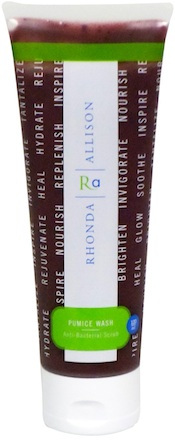
Exfoliation, which I discussed in last week’s post, is essential to maintaining vibrant, healthy skin. While the skin typically performs this on its own, sometimes it needs some support by way of mechanical (physical) or chemical exfoliators.
We’re all familiar with scrubs (physical exfoliators) and the benefits they produce. They are however, some of the more misused skin care products among consumers. As aesthetic professionals we should be talking to our clients on the functionality and proper use of scrubs.
How often should they be used, what exactly do scrubs do, are there any skin types that must avoid them, what are the types of scrubs available, and which is most appropriate for your client’s skin? Answers to these questions will support you in educating your clients and determine which scrub is most effective for their skin.
What constitutes a scrub?
In general terms a scrub is a formula containing an abrasive ingredient used to buff and polish skin, soften and lift dead skin cells, and provide a second-phase deep cleanse. There are a number of different types used for varying purposes.
Primary forms range from pumice to jojoba beads, and diatomaceous earth to pearl powder and bamboo.
- Jojoba beads – one of the gentlest exfoliators, it is essentially jojoba oil made into minute beads, which does not stress or tear the skin. Joboba beads will naturally allow the oil to melt into the skin to further soften sebum and skin cells.
- Diatomaceous earth – a naturally occurring, soft rock with an abrasive feel similar to pumice powder. It is a purified form of algae in a fine grain.
- Bamboo – contains the richest source of silica, a silicon and oxygen compound also found in many rocks and the earth’s crust. The powder is derived from ground bamboo stems – it works for both facial and body scrubs.
- Pearl powder – finely milled from freshwater pearls, which are rich in minerals and provide antibacterial, detoxification and skin-nourishing properties.
- Pumice – a highly porous, very light stone created from lava, it is a more abrasive granular.
The art of combining exfoliators
Oftentimes many of the physical exfoliators may be combined with one another or with an exfoliating enzyme or acid like salicylic to create an active scrub, like our REDMethod Buffed. This not only enhances the exfoliation, it also stimulates the regeneration process.
Depending on the active the granular is teamed with, the outcome will vary. For instance, jojoba beads blended with key actives like kojic and L-ascorbic acid will hydrate, brighten and smooth the skin. Scrubs with salicylic acid will provide anti-acne and anti-irritant properties. Similarly green tea will also provide antibacterial support along with a potent dose of antioxidants to balance oil in impure skin conditions.
Remember it’s all about finding the right formula for your client’s skin. In the next post I will go in depth on best scrubbing practices and when to use caution.
Question: What manual exfoliators do you use most and why?
